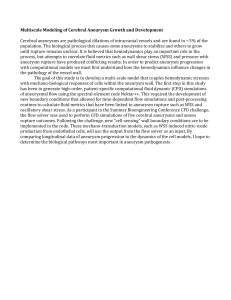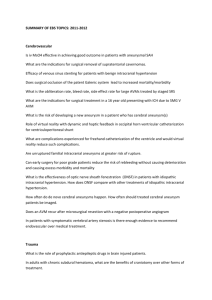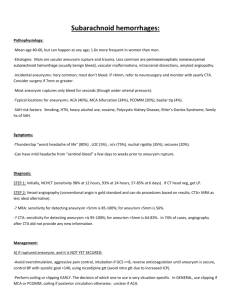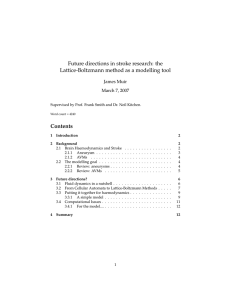Patient-specific Modelling of Blood-flow in Cerebral Aneurysms.
advertisement
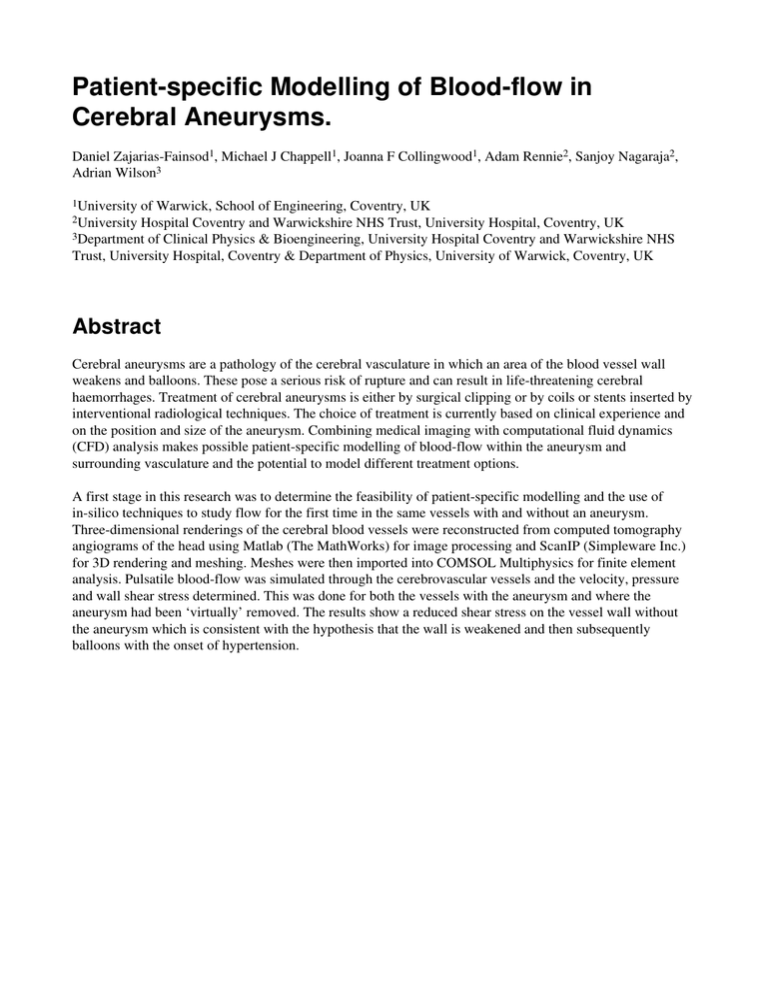
Patient-specific Modelling of Blood-flow in Cerebral Aneurysms. Daniel Zajarias-Fainsod1, Michael J Chappell1, Joanna F Collingwood1, Adam Rennie2, Sanjoy Nagaraja2, Adrian Wilson3 1University of Warwick, School of Engineering, Coventry, UK Hospital Coventry and Warwickshire NHS Trust, University Hospital, Coventry, UK 3Department of Clinical Physics & Bioengineering, University Hospital Coventry and Warwickshire NHS Trust, University Hospital, Coventry & Department of Physics, University of Warwick, Coventry, UK 2University Abstract Cerebral aneurysms are a pathology of the cerebral vasculature in which an area of the blood vessel wall weakens and balloons. These pose a serious risk of rupture and can result in life-threatening cerebral haemorrhages. Treatment of cerebral aneurysms is either by surgical clipping or by coils or stents inserted by interventional radiological techniques. The choice of treatment is currently based on clinical experience and on the position and size of the aneurysm. Combining medical imaging with computational fluid dynamics (CFD) analysis makes possible patient-specific modelling of blood-flow within the aneurysm and surrounding vasculature and the potential to model different treatment options. A first stage in this research was to determine the feasibility of patient-specific modelling and the use of in-silico techniques to study flow for the first time in the same vessels with and without an aneurysm. Three-dimensional renderings of the cerebral blood vessels were reconstructed from computed tomography angiograms of the head using Matlab (The MathWorks) for image processing and ScanIP (Simpleware Inc.) for 3D rendering and meshing. Meshes were then imported into COMSOL Multiphysics for finite element analysis. Pulsatile blood-flow was simulated through the cerebrovascular vessels and the velocity, pressure and wall shear stress determined. This was done for both the vessels with the aneurysm and where the aneurysm had been ‘virtually’ removed. The results show a reduced shear stress on the vessel wall without the aneurysm which is consistent with the hypothesis that the wall is weakened and then subsequently balloons with the onset of hypertension.
